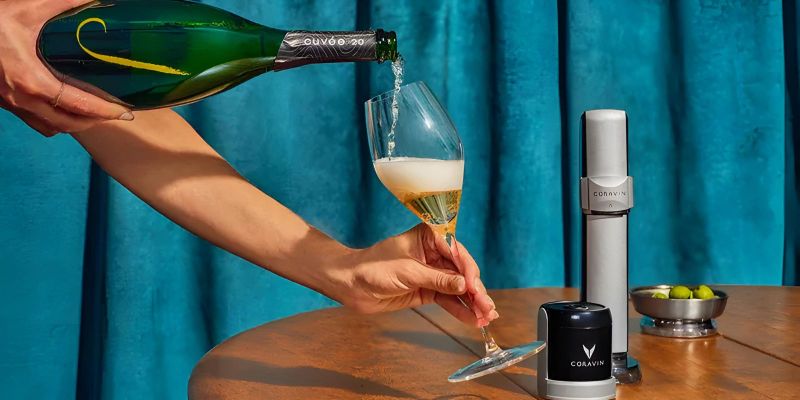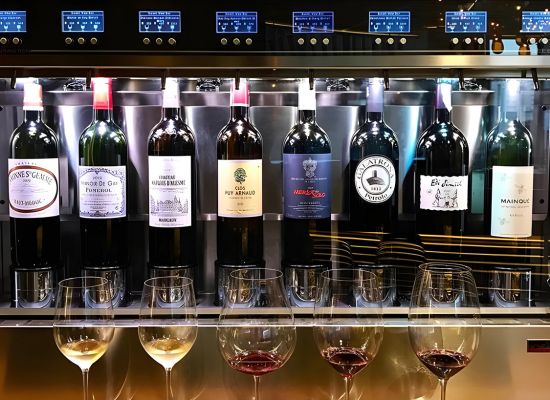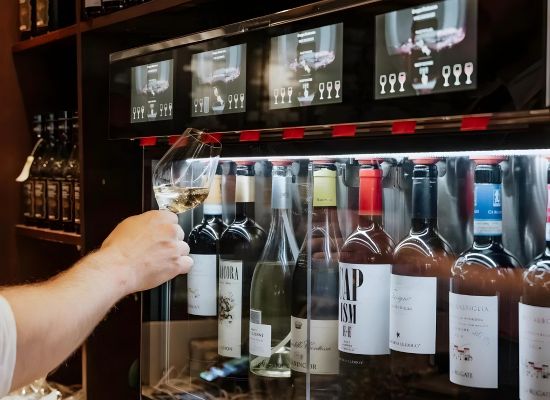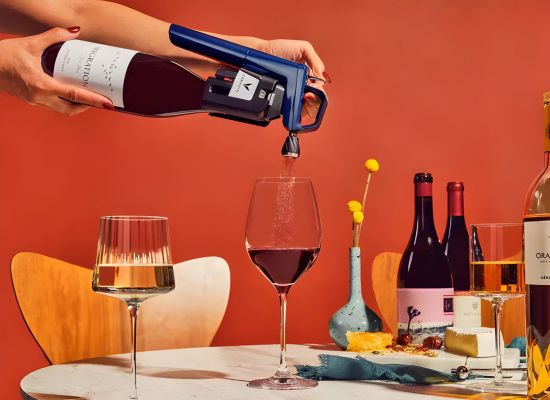Educating Sommeliers Worldwide.
By Beverage Trade Network

Implementing a successful wine-by-the-glass program requires a strategic approach to pricing, inventory management, and quality control. By adopting efficient pricing models, businesses can optimize profitability while offering options for different budgets. Efficient ordering, regular monitoring, and technology integration are crucial for maintaining optimal stock levels and reducing waste. Quality control measures, including proper storage, preservation systems, and staff training, ensure high standards and customer satisfaction. In today’s competitive market, a well-executed wine-by-the-glass program can significantly enhance a restaurant's appeal and profitability. By carefully considering these operational aspects and best practices, sommeliers and restaurant managers can create a dynamic, profitable, and customer-focused wine program. Embracing these strategies not only maximizes profit but also elevates the overall dining experience, making wine by the glass a central feature of any successful hospitality operation.
Choosing the right pricing strategy is vital for the profitability of a wine-by-the-glass program. Several approaches can be employed, each with its benefits and potential drawbacks.
Cost-plus pricing is a straightforward method where a fixed percentage is added to the cost of the wine to determine the selling price. For example, if a bottle of wine costs $10 and a restaurant uses a 300% markup, each glass would be priced around $7.50, assuming a standard five-ounce pour from a 750ml bottle. This method ensures that costs are covered and a consistent profit margin is achieved. However, it is essential to balance this with market rates to remain competitive.
Value-based pricing involves setting prices based on what customers are willing to pay rather than strictly on cost. This strategy considers the perceived value of the wine, the dining experience, and the customer demographic. For instance, a high-end restaurant might charge a premium for a glass of wine due to the ambiance and service level provided. Understanding the target market’s willingness to pay can lead to higher profits, especially for exclusive or rare selections.
Dynamic Pricing adjusts prices based on demand and inventory levels. During slower periods, such as weekday afternoons, offering discounted prices on select wines can boost sales. Conversely, during peak times or special events, prices can be adjusted upwards. For example, a restaurant might offer a happy hour special where select wines by the glass are half-price, driving traffic and increasing overall sales volume.

Source: Wine Emotion
Efficient inventory management is critical to minimizing waste and ensuring that popular and fast-moving wines are always available. Several strategies can help manage stock levels effectively.
Efficient Ordering and Stocking involve analyzing past sales data to predict future demand accurately. By understanding trends and customer preferences, managers can order the right amount of each wine, reducing the risk of overstocking or running out of popular options. For example, if a particular Chardonnay is a best-seller in the summer months, ordering larger quantities in advance can prevent shortages and capitalize on its popularity.
Monitoring and Rotation are essential to maintaining wine quality. Implementing a First In, First Out (FIFO) system ensures that older stock is used before newer arrivals, reducing the risk of spoilage. Regular inventory audits can identify discrepancies and address issues promptly. For instance, a weekly check might reveal that certain bottles are nearing the end of their optimal shelf life, prompting a promotion to move stock quickly.
Technology Integration can streamline inventory management processes. Using inventory management software, such as BinWise or Uncorkd, allows for real-time tracking of stock levels, sales, and reorder points. Integrating these systems with Point-of-Sale software ensures that inventory data is updated automatically with each sale, reducing manual errors and improving accuracy. Predictive analytics can further enhance ordering efficiency by forecasting future demand based on historical data and current trends.

Source: Neodistributing
Maintaining the quality of wine served by the glass is crucial for customer satisfaction and repeat business. Several techniques and tools can help preserve wine freshness and quality.
Proper Storage is the foundation of quality control. Wines must be stored at the correct temperatures to maintain their characteristics. Reds are typically stored between 55-60°F, while sparkling, whites and rosés are best kept at 45-50°F. Humidity levels should be around 70% to prevent corks from drying out, and light exposure, particularly UV light, should be minimized to avoid degradation.
Preservation Systems are essential for extending the life of opened bottles. Automated wine dispensers, such as those made by Enomatic, use inert gas systems like argon to prevent oxidation and keep wine fresh for several weeks. Manual vacuum pumps, such as the Vacu Vin, remove air from bottles, slowing down oxidation. For more expensive wines, Coravin systems allow the wine to be poured without removing the cork, preserving the remaining wine for months.
Staff Training ensures that wines are handled and served correctly. Proper pouring techniques help control portions and maintain consistency. For example, teaching staff to pour a standard five-ounce glass reduces over-pouring and helps manage costs. Regular tastings can also ensure that staff can identify wines that may have spoiled or are no longer at their best. Educated staff can engage customers more effectively, enhancing the overall experience and potentially increasing sales through informed recommendations.

Source: Coravin
A well-executed wine-by-the-glass program can be a cornerstone of a restaurant's success, offering flexibility and variety that appeal to a wide range of customers. By strategically approaching pricing with models such as cost-plus, value-based, or dynamic pricing, businesses can maximize profitability. Effective inventory management through efficient ordering, regular monitoring, and technology integration ensures optimal stock levels and minimizes waste. In the competitive landscape of hospitality, implementing these best practices can elevate the overall dining experience, making wine by the glass not just a profitable venture but a distinctive feature that sets a venue apart. Embracing these strategies enables sommeliers and restaurant managers to create a dynamic, profitable, and customer-focused wine program that stands out in the industry.
Header Image Source: Coravin